The Narkomfin Building (Dom Narkomfin) in Moscow was designed by Moisei Ginzburg and Ignatii Milinis in 1928 to host collective housing for employees of the Narodnyo Kommissariat Finansov (the People’s Commissariat of Finance).
Completed in 1932, the Narkomfin is one of the few actually built architectural works responding to the constructivist aim of reinventing the everyday life of people, (byt in Russian), trough typologically experimental buildings that embodied new Socialist ideals.
The main principle behind the conception of the building is the collectivization of all the areas that corresponded to collective functions. Reading, cooking, raising children, doing sport, all are functions conceptually removed from the traditional -bourgeois- apartment, and relocated within a glazed, collective volume hosting communal kindergartens, kitchens, libraries and gymnasiums. The upper roof would also work as a communal recreative space.
The individual spaces, eg. rooms for sleeping, washrooms and toilets, as well as study and individual research areas are, instead, hosted in a long block with ribbon windows. The windows, here, open widely towards the exterior natural setting, implicitly questioning the closed and interior nature of a “room”.
The two six-storey-high compounds, one destined to individual activities and the other to collective ones, are connected by a covered bridge and an exterior communal garden.
The duplex flats were divided into two types, the K Types which still included a surface for children and cooking, and the F Types, where all the communal functions, located outside of the apartments, implied that all children should be raised collectively in order to contrast patriarchial relationships. The transformation of cooking into a communal activity would also allow women to be freed from household responsibilities and question the privatization of couple relationships.
After Stalin’s rise to power, the Narkomfin’s communal spaces fell in abandon and kitchens were added by the inhabitants to the single apartments.
In his blog Charnel House, Ross Wolfe collected several beautiful pictures of the buildings by different photographers:
1. Charles Dedoyard, a Frenchman and contributor to the avantgarde magazine L’Architecture d’aujourd’hui;
2. Vladimir Gruntal, a noted constructivist photographer and member of Rodchenko’s October Association; and
3. Robert Byron, a British travel writer and Byzantine historian known for his deep appreciation of architecture.
Further reading and more photographs:
Dom Narkomfin in Moscow, 1929, Moisei Ginzburg & Ignatii Milinis’ iconic constructivist masterpiece, in: Charnel House.
Moisei Ginzburg’s constructivist masterpiece: Narkomfin during the 1930s, in Charnel House

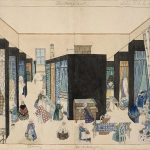
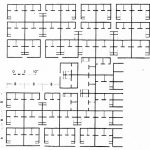
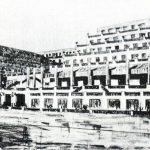
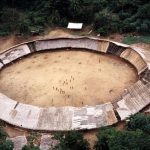
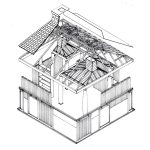
Hi ,
I am writing a dissertation on communal living and why we should build schemes like Dom Narkomfin again. I was wondering if you have any recommendations for reading material on the constructivist idea of revolutionizing the every day life . I would be very grateful if you could recommend me any other similar projects .
Hi Paula,
its probably too late for you, but if someone else might search for something similar, the book “Dwelling” by Moisei Ginzburg was recently translated into English and could be very helpful for research.